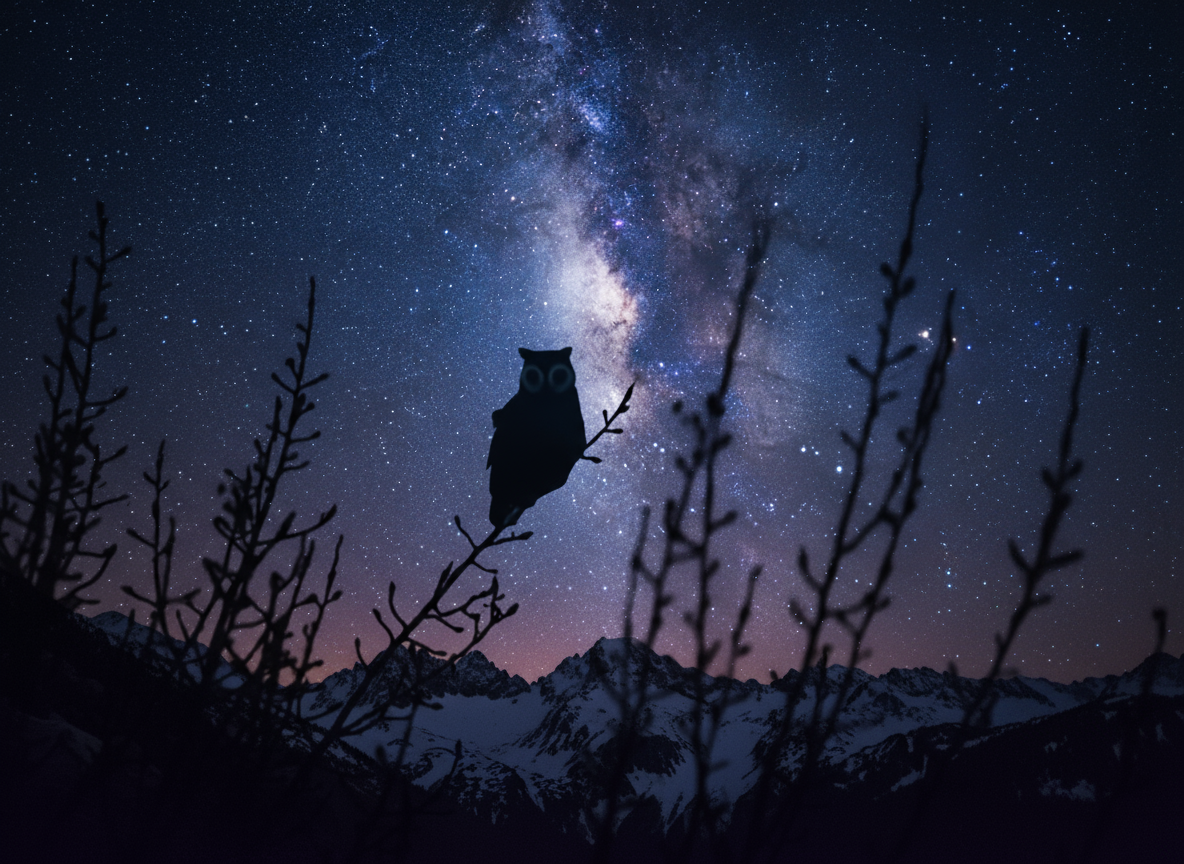When the sun sets and darkness blankets the landscape, a whole different world comes alive. While most of us are winding down for the evening, nocturnal predators are just getting started with their nightly hunt. These remarkable creatures have spent millions of years perfecting the art of hunting in darkness, developing extraordinary senses and abilities that make them some of nature’s most efficient killers. Whether you’re a wildlife enthusiast, a night hunter looking to understand your quarry better, or simply curious about the creatures that roam after dark, understanding these animals gives us a deeper appreciation for the complex ecosystem that thrives when we’re asleep.
What Makes an Animal Nocturnal?
Nocturnal animals aren’t just creatures that happen to stay up late—they’ve evolved specific biological adaptations that make nighttime their optimal hunting period. These animals have internal circadian rhythms that are essentially the opposite of ours, making them naturally alert and active when darkness falls. The advantages of being nocturnal are significant: less competition for food, cooler temperatures in hot climates, and most importantly, the cover of darkness to ambush unsuspecting prey. For predators specifically, the night offers a tactical advantage that diurnal hunters simply don’t have. Their prey might be sleeping, less alert, or struggling to see danger approaching. Evolution has shaped these hunters into perfectly designed nighttime killing machines, each species developing unique adaptations that suit their specific hunting style and environment. From the thermal-sensing abilities of some snakes to the incredible hearing of owls, nocturnal predators prove that you don’t need sunlight to be an apex predator. For those interested in observing these creatures, modern technology like thermal scopes has revolutionized our ability to witness their nocturnal activities without disturbing their natural behavior.
Superior Senses in the Dark
The most striking feature of nocturnal predators is their sensory adaptations that allow them to navigate and hunt in near-total darkness. Vision is the most obvious adaptation—many nocturnal animals have significantly larger eyes relative to their body size compared to diurnal species. These enlarged eyes contain a higher concentration of rod cells, which are photoreceptors specialized for low-light conditions. Additionally, many nocturnal predators possess a reflective layer behind their retina called the tapetum lucidum, which acts like a mirror to bounce light back through the retina a second time, effectively doubling their ability to capture available light. This is what causes the characteristic “eyeshine” when you spot animals at night with a flashlight.
But vision is just one piece of the puzzle. Nocturnal predators often rely on a combination of enhanced senses working together to create a complete picture of their environment. Owls, for instance, have asymmetrical ear placement that allows them to pinpoint the exact location of a mouse rustling in grass with terrifying accuracy. Bats use echolocation, emitting high-frequency sounds and interpreting the echoes to create a “sound map” of their surroundings. Some snakes have heat-sensing pit organs that detect the infrared radiation emitted by warm-blooded prey, allowing them to “see” heat signatures in complete darkness. Cats and other feline predators have extremely sensitive whiskers that detect air currents and vibrations, helping them navigate tight spaces and sense nearby movement. These combined sensory superpowers make nocturnal predators incredibly effective hunters that we’re only beginning to fully understand.
Owls: Silent Death from Above
When we talk about nocturnal predators, owls are often the first creatures that come to mind, and for good reason. These birds of prey are perhaps the most perfectly adapted aerial hunters of the night. With over 200 species worldwide, owls have diversified to fill various ecological niches, but they all share common adaptations that make them formidable predators. Their large, forward-facing eyes give them excellent binocular vision and depth perception, crucial for accurately judging distances when swooping down on prey. Some owl species can see in light levels 100 times dimmer than what humans need to see clearly.
What truly sets owls apart is their ability to fly in complete silence. Their flight feathers have specialized structures with soft fringes on the leading edges and a velvety surface that dampens sound, allowing them to approach prey without any warning whistle of wings. This silent flight, combined with their exceptional hearing, makes them devastating hunters. A barn owl, for example, can catch a mouse in complete darkness using hearing alone, pinpointing the location with such precision that it rarely misses. Great horned owls are powerful enough to take down prey much larger than themselves, including skunks, rabbits, and even other raptors. The great grey owl can hear a vole moving under two feet of snow and punch through the snow to grab it. These adaptations have made owls successful predators across diverse habitats, from Arctic tundra to tropical rainforests, cementing their reputation as one of nature’s most efficient nocturnal hunters.
Big Cats: Apex Predators of the Night
While some big cats like lions and cheetahs are known for daytime hunting, many feline predators are actually most active during twilight hours and nighttime. Leopards, jaguars, tigers, and even smaller wild cats like bobcats and ocelots are predominantly nocturnal or crepuscular hunters. These cats possess the physical prowess, stealth, and sensory adaptations that make them among the most dangerous nocturnal predators on the planet. Their eyes contain a high concentration of rods and a well-developed tapetum lucidum, giving them vision that’s six to eight times better than humans in low light conditions. This means they can hunt effectively in conditions that would leave their prey essentially blind.
Beyond vision, big cats are masters of stealth and patience. Their retractable claws remain sharp because they’re kept sheathed when not in use, and their padded paws allow them to move in near silence. Leopards are particularly impressive nocturnal hunters, capable of dragging prey twice their weight up into trees to keep it safe from scavengers. They’re ambush predators that rely on getting as close as possible before launching a lightning-fast attack. Jaguars have the strongest bite force relative to size of any big cat, allowing them to pierce turtle shells and caiman skulls with ease—hunting tactics often employed during their nocturnal riverside patrols. In North America, bobcats and mountain lions (also called cougars or pumas) are skilled nocturnal hunters that can take down prey much larger than themselves. These solitary hunters exemplify the efficiency of nocturnal predation, using darkness as their ally to become nearly invisible until the moment they strike.
Bats: Echolocation Experts
Bats represent one of the most diverse groups of nocturnal predators, with over 1,400 species found across the globe. While many people think of bats as simply flying rodents, they’re actually more closely related to primates and have evolved one of the most sophisticated hunting systems in the animal kingdom. Most insectivorous bats use echolocation—a biological sonar system where they emit high-frequency calls and listen for the echoes bouncing back from objects and prey. This allows them to build a three-dimensional sound picture of their environment with astonishing detail, detecting insects as small as mosquitoes in complete darkness.
The sophistication of bat echolocation is truly remarkable. Different species have evolved specialized calls optimized for their specific hunting environments and prey types. Bats hunting in open spaces use lower frequency calls that travel farther, while those navigating dense forest use higher frequency calls that provide more detail at shorter ranges. Some bats can adjust their call frequency in real-time to avoid interference from other bats hunting nearby. Certain species like the greater bulldog bat can even detect tiny ripples on water surfaces, allowing them to catch fish swimming just below the surface in complete darkness. Beyond echolocation, some bat species are formidable predators in other ways. The spectral bat and false vampire bat are carnivorous species that hunt other vertebrates including birds, rodents, and even other bats, using both echolocation and acute hearing to locate prey. Their role as nocturnal insect controllers is also ecologically vital, with some bat colonies consuming tons of insects nightly, making them valuable allies for farmers and reducing pest populations naturally.
Snakes and Reptilian Night Hunters
When darkness falls, various snake species emerge as highly effective predators, particularly in warmer climates where nighttime activity helps them avoid overheating. Pit vipers, including rattlesnakes, copperheads, and cottonmouths, are among the most sophisticated nocturnal reptilian hunters. Their namesake “pits” are heat-sensing organs located between their eyes and nostrils that detect infrared radiation. These specialized organs are so sensitive they can detect temperature differences as small as 0.003 degrees Celsius, allowing them to create a thermal image of their surroundings and locate warm-blooded prey with deadly accuracy even in pitch-black conditions.
Pythons and boas, though lacking the specialized pit organs of pit vipers, are still effective nocturnal hunters with heat-sensitive scales around their lips that serve a similar function. These constrictors combine thermal sensing with other adaptations like excellent chemoreception through their flickering tongues, which collect scent particles from the air and transfer them to the Jacobson’s organ in the roof of their mouth. This gives them a detailed chemical map of their environment. Nocturnal hunting allows these snakes to target prey like rodents and birds that are resting and less vigilant after dark. Crocodilians, while not snakes, are also formidable nocturnal reptilian predators. Species like the American alligator and Nile crocodile are most active at night, using their excellent night vision, pressure-sensitive scales that detect water disturbances, and patient ambush tactics to catch prey coming to the water’s edge to drink. These ancient predators have remained virtually unchanged for millions of years, proving that their nocturnal hunting strategies are tremendously effective.
The Most Dangerous Nocturnal Predators in the U.S.
North America hosts a impressive variety of nocturnal predators that range from relatively harmless to genuinely dangerous. Understanding which predators are active in your area is important for anyone spending time outdoors after dark, whether you’re camping, hiking, or night hunting. The most dangerous nocturnal predator in most of the United States is arguably the American alligator, found throughout the southeastern states. These prehistoric predators are most active between dusk and dawn, particularly during warmer months, and are responsible for occasional attacks on humans and pets, especially near bodies of water.
Mountain lions (cougars) are another significant nocturnal threat across the western United States and increasingly in some eastern regions. While attacks on humans are rare, they do occur, particularly during dawn and dusk when these big cats are most active. Coyotes have expanded their range dramatically and are now found in all 49 continental states, becoming increasingly bold in urban and suburban areas where they hunt primarily at night. While typically not dangerous to adult humans, they pose a serious threat to pets and small children. Black bears, though omnivorous, are powerful predators that are often most active at night, especially in areas with human activity during the day. Bears searching for food can be dangerous if surprised or if they’ve become habituated to human food sources. Bobcats, while generally avoiding humans, are skilled nocturnal hunters throughout much of the country. Venomous snakes like rattlesnakes and copperheads are also active nocturnal hunters in many regions, and accidental encounters can result in dangerous bites. Understanding the nocturnal predators in your specific area and taking appropriate precautions—like making noise while hiking, securing food properly, and keeping pets indoors at night—significantly reduces the already small risk these animals pose.
Adaptations That Give Nocturnal Animals an Edge
The evolutionary adaptations that allow animals to thrive as nocturnal predators go far beyond just good night vision. These creatures have developed an entire suite of specialized characteristics that work together to make them supremely effective in darkness. Physiologically, many nocturnal predators have adapted their body temperatures and metabolic rates to function optimally during cooler nighttime hours. Some have evolved darker coloration that provides better camouflage in low-light conditions, while others have coloring that breaks up their outline, making them harder to spot.
Behavioral adaptations are equally important. Nocturnal predators often exhibit patience and energy conservation strategies, remaining motionless for extended periods before striking with explosive speed and precision. Many species have developed enhanced memory and spatial awareness, creating mental maps of their territories that allow them to navigate effectively even when visual cues are minimal. Some nocturnal hunters have also adapted their reproductive and social behaviors around nighttime activity, with many species communicating through sounds, scents, and other non-visual cues that work well in darkness. The hunting strategies themselves are often adapted for nighttime success—ambush predation becomes more effective when prey can’t see the attack coming, and persistence hunting works well when predators can track prey through the night without overheating. These combined adaptations demonstrate that becoming nocturnal isn’t just about staying awake at night; it’s about fundamentally restructuring biology, behavior, and hunting strategy to exploit a temporal niche that offers significant advantages to those adapted for it.
Darkness Offers Different Advantages to Different Animals
Not all nocturnal predators hunt in the dark for the same reasons, and the specific advantages vary considerably based on species, habitat, and prey type. For some predators, nighttime activity is primarily about temperature regulation. Desert-dwelling hunters like fennec foxes, many snake species, and certain cats avoid the brutal daytime heat that could lead to dangerous dehydration or heat exhaustion. The cooler nighttime temperatures allow them to be active and hunt without the physiological stress of extreme heat. In tropical regions, the temperature difference between day and night may be less dramatic, but reduced sun exposure still offers comfort advantages.
For other species, the darkness itself is the weapon. Predators that rely heavily on stealth and ambush tactics benefit enormously from reduced visibility that makes it harder for prey to detect their approach. The cover of night allows certain prey species to be more active as well, creating opportunities that don’t exist during daylight hours—essentially, some predators are nocturnal because their prey is nocturnal. Competition avoidance is another significant advantage. In ecosystems with multiple predator species, temporal partitioning—where different species are active at different times—reduces direct competition for the same resources. A hawk and an owl might hunt the same prey species in the same area, but because one hunts by day and the other by night, they’re not competing directly. Finally, for prey species that have become nocturnal, predators must follow or miss out on food sources. This predator-prey arms race has driven the evolution of increasingly sophisticated adaptations on both sides, creating the remarkable diversity of nocturnal life we see today.
FAQs
What is the deadliest nocturnal predator in the world?
While “deadliest” can be measured in different ways, saltwater crocodiles and Nile crocodiles are among the most dangerous nocturnal predators to humans, responsible for hundreds of deaths annually. For sheer hunting efficiency within their ecosystems, owls, big cats like leopards and jaguars, and various snake species are all apex nocturnal predators. The answer really depends on whether you’re measuring danger to humans, hunting success rate, or ecological impact.
Why do predators hunt at night instead of during the day?
Predators hunt at night for several key advantages: darkness provides cover for stealthy approaches, many prey species are less alert or sleeping at night, nighttime temperatures are cooler which prevents overheating during physical exertion, there’s less competition from diurnal predators, and some prey species are only active at night. Many nocturnal predators have evolved specialized sensory adaptations that give them a significant advantage over their prey in low-light conditions.
Can nocturnal predators see in complete darkness?
No animal can see in truly complete darkness—vision requires at least some light. However, nocturnal predators have eyes adapted to function in extremely low light conditions that would appear pitch black to humans. Many species supplement vision with other senses: bats use echolocation, snakes use heat-sensing organs, and owls rely heavily on hearing. These combined sensory abilities allow them to hunt effectively in conditions humans would consider complete darkness.
What time are nocturnal predators most active?
Most nocturnal predators are most active during twilight hours—dusk and dawn—when there’s still some ambient light but prey animals are transitioning between day and night activities. These crepuscular periods offer optimal hunting conditions. However, many species remain active throughout the night, with activity levels often peaking around midnight and again before dawn. Activity patterns also vary by season, moon phase, weather conditions, and prey availability.
How do I stay safe from nocturnal predators when camping or hiking?
To stay safe around nocturnal predators, make noise while moving to avoid surprising animals, never approach or feed wildlife, store food properly in bear-proof containers or hung from trees, keep pets on leashes and indoors at night, carry a flashlight or headlamp, stay on established trails, camp in designated areas away from animal trails leading to water sources, and research which predators are common in your specific area so you can take appropriate precautions. Most nocturnal predators naturally avoid humans and attacks are extremely rare when proper precautions are followed.








